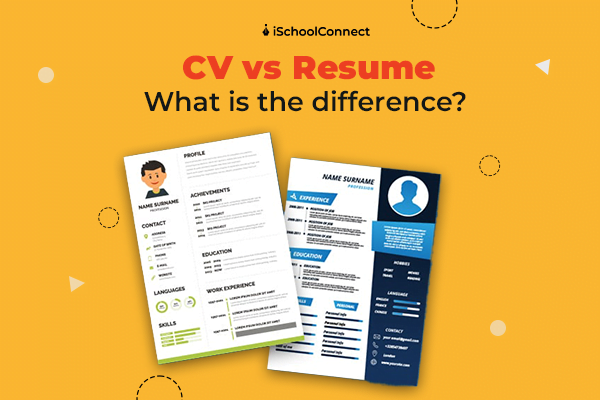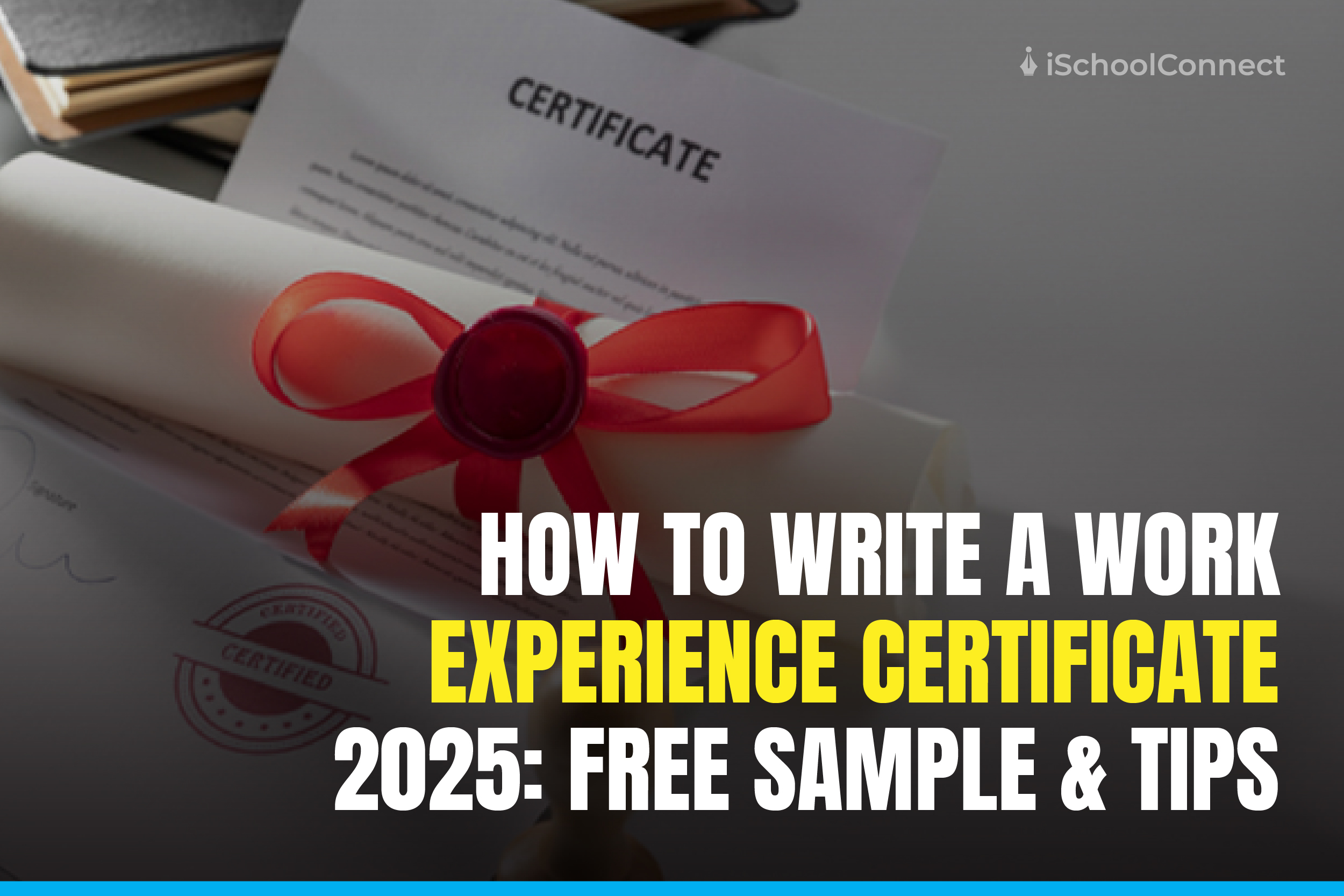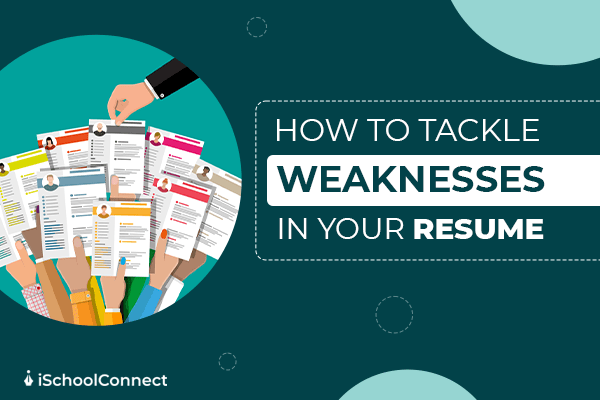Table of Contents
- What is a Curriculum vitae (CV)?
- CV formats are usually classified into three types
- What is a resume?
- There are four basic types of resumes
- What Are the Differences Between a CV and a Resume?
- What should you include in your CV?
- What should you include in your resume?
- When to use a CV?
- When to use a resume?
- How do CVs and resumes differ depending on the country?
- How to prepare a good CV?
- How to create a perfect resume?
- CV and resume writing tips
- Use a template
- Proofread and edit
- Key Takeaways
- FAQs
Applying for a job for the first time might be perplexing. During your job hunt, you may have come across the terms CV and resume. Knowing the difference between a CV and a resume is essential if you want to portray yourself as a skilled candidate during job hunting. Continue reading to learn the difference between a resume and a curriculum vitae (CV), when to use a CV vs a resume, employer and country preferences, and more.
What is a Curriculum vitae (CV)?
A curriculum vitae (CV) is a lengthy document that contains personal and professional information about you. A CV may include information about your education, awards, scholarships, research or academic projects, publications, and employment history, as well as references, special training, and certifications, work projects or dissertations, interests, and hobbies, and a personal bio emphasizing your talents and positive traits.
CV formats are usually classified into three types
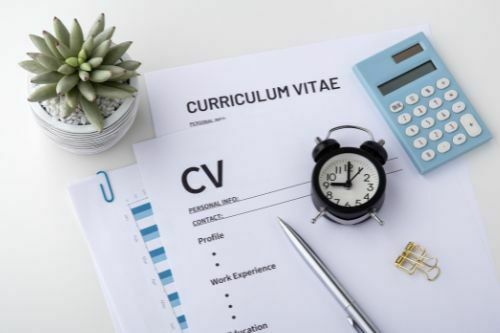
Functional CV—A functional CV focuses on your talents rather than your job experience. These CVs are ideal for job seekers who are fresh grads, lack industry experience or are changing careers. The functional CV emphasizes strengths while ignoring any work gaps.
Chronological CV—This is the most prevalent curriculum vitae style, and it lists your employment history beginning with your most recent position. If you have past job experience and want to showcase your talents and project experience, use a chronological CV.
Combination CV—This structure combines a chronological CV with a functional CV. You may showcase your abilities and give a chronological job history by using a combo CV.
What is a resume?
A resume is a document that summarizes your educational background, employment experience, and talents. The length of your resume may be determined by the number of years of job experience you have. However, for the majority of candidates, it is possible to keep it to a single page.
There are four basic types of resumes
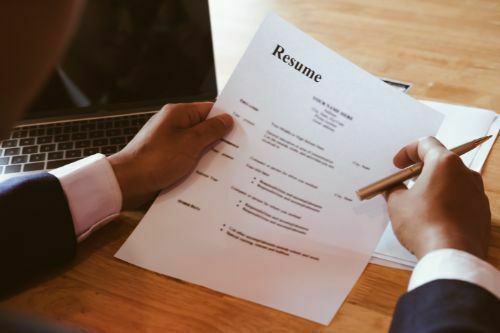
Chronological resume—This resume style, like the chronological CV, presents your job experience in descending chronological sequence, beginning with the most recent employment. A chronological resume is a typical format used by many hiring managers.
Functional resume—This structure prioritizes abilities and experience over work history. If you are changing fields or have minimal job experience, a functional resume structure is excellent.
Combined resume—A combined resume incorporates chronological and functional resume formats. This resume structure focuses on your talents and experience before describing your work history in chronological order.
Targeted resume—A targeted resume is a customized document highlighting your qualifications and experience for a specific job opening. Generally, a targeted resume requires more preparation since it is tailored to one prospective company at a time.
What Are the Differences Between a CV and a Resume?
The key differences between a CV and a resume are as follows
| CV | Resume | |
| Length | Two to three pages (or more depending on your achievements) | One to two pages |
| Type of information | Includes all your academic qualifications, experience, skills, and achievements | A summary showing only your most relevant skills and work experience for the job role |
What should you include in your CV?
When preparing your CV, you should include
- Your name and contact information
- Personal statement (a brief overview of your professional background and career objectives)
- Professional experience
- Academic qualifications
- Technical and personal skills
- Certifications
- Language fluency
- Publications
- Awards or honors received
- Interests and hobbies
- Volunteer work
What should you include in your resume?
The purpose of your resume is to provide employers with a quick overview of your skills and experiences. You should include:
- Name and contact information
- Resume summary or objective statement (similar to a personal statement in a CV)
- Employment history
- Educational accomplishments
- Skills and certifications relevant to the job
When to use a CV?
CVs are appropriate for specialized job duties that need specialist expertise since they contain many pages of information about your professional abilities and experience. Consider using a CV while applying for positions in education or research, since the whole list of your qualifications will appeal to companies in these industries.
When to use a resume?

When applying for employment that isn’t academic or research-based, you should submit a résumé. In the United States, the majority of corporate, governmental, and nonprofit companies will need a resume.
The one-page format of a resume helps employers to receive a quick overview of the candidate to evaluate if they meet the job’s fundamental requirements. Resumes are reviewed for pertinent information to decide which applicants are rejected and which are given more consideration (e.g., called in for an interview).
How do CVs and resumes differ depending on the country?
When it comes to CV versus resume, bear in mind that employers in different nations may have different preferences — for example, while resumes are the most widely used format for job seekers in the United States, employers in other countries may want a CV. So, what is the distinction between a CV and a resume?
The chart below shows how the criteria for a CV and resume differ depending on the nation. Keep in mind that the information provided here is a broad overview of each nation; it is critical to conduct a study before submitting and to revise your application appropriately.
| Country | Preference |
| US | Resume for most jobs and CV for academic roles |
| China | Resume |
| Brazil | CV |
| India | CV (the terms CV and resume are used interchangeably) |
| UK | CV |
| Australia | Resume (the terms CV and resume are used interchangeably) |
| Country | Length |
| US | CV—two to three pages or more Resume—one to two pages |
| China | One to two pages |
| Brazil | One to two pages |
| India | Two pages |
| UK | One to two pages |
| Australia | One to two pages |
| Country | Personal Details |
| US | Name and contact information. Due to anti-discrimination and labor laws, do not include your photo, age, gender, marital status, race, and religion. |
| China | Name, date of birth, contact information, and your photo. |
| Brazil | Name, date of birth, contact information, and your photo. |
| India | Name, address, email address, and phone number. Add other information, such as age, gender, marital status, photo, and nationality, if required. |
| UK | Name, date of birth, contact information, and your photo. |
| Australia | Name, address, phone number, mobile number, and email address. You are not required to include your photo. |
| Country | References |
| US | Do not add, unless requested |
| China | Add, If required |
| Brazil | Do not add, unless requested |
| India | Do not add, unless requested |
| UK | Add, If required |
| Australia | Add, If required |
How to prepare a good CV?

Here are some pointers to make your CV stand out from the crowd.
Refer and review successful CVs— Additional research can help you understand what information companies are searching for in CVs, such as effective CV structure and CV examples and templates for each job category.
Keep it simple — Write your CV simply and concisely. The paper should be simple to explore for your future employer.
Make it unique — Highlight your abilities and knowledge that are directly connected to the position you’re seeking. You should also add a well-written personal statement to make a good first impression.
Proofread your CV—Once you’ve completed your CV, look over it once (or twice) to ensure it’s free of spelling and grammatical errors.
How to create a perfect resume?
It is vital to have an outstanding resume to land your ideal job. Here are some pointers to keep in mind while you write your Resume.
Some recommendations for writing a successful resume.
Look for relevant keywords: When you apply for a job, check the job listings for important keywords and incorporate these specific words or phrases in your Resume. These are the qualities that an employer seeks in an applicant.
Refer to resume examples: You may choose an appropriate structure that will perform best for you and understand which information will make your resume stand out by looking at several resume examples.
Include only relevant information: A resume, unlike a CV, is a summary of your academic credentials and job experience. Keep your CV to a bare minimum.
Proofread: Check your resume for grammatical and spelling issues numerous times.
CV and resume writing tips
When deciding between a CV and a resume, keep in mind that their primary aim is to show off your professional portfolio to potential employers.
A well-written resume or CV may convince employers that you are the best applicant for the position by emphasizing your most important credentials, achievements, and experiences. If you’re unsure, contact the recruiting manager listed in the job description.
Customizing your resume or CV to the specific positions you want to apply for is vital because it allows you to highlight the most relevant skills that will help you perform well in the role while also standing out to employers. In addition to a cover letter, which should always be tailored to individual job postings, can go into much greater detail.
Make careful to provide the particular criteria mentioned in the job description, as most offers will include the exact papers and information you need to be considered for the position.
By personalizing your resume or CV, you may demonstrate to employers that you are excited about the job and are prepared to go above and beyond when applying.
Use a template
Each CV and resume is unique, and the structure of your resume will vary depending on the industry of the positions you are searching for and the criteria of the company. When first starting, a resume or CV template may be quite useful in preparing your application since it offers you an idea of what you can include in your resume or CV. You may also compare your resume or CV to a job application resume sample to see if you have covered all of the important points.
If you want to use a template or a job application resume example, keep in mind that they should only be used as a basic guideline for producing your resume or CV — avoid replicating the template and adapt the parts as needed for the position.
Proofread and edit
Depending on the individual and the job function, creating a resume or CV can be a lengthy process with several adjustments and changes. This is why once done, you should thoroughly examine and edit your resume or CV to ensure it is error-free.
Aside from being an excellent professional habit to cultivate, editing and proofreading results in a clean resume or CV that demonstrates to employers that you pay attentive attention to detail. Consider having a friend or family member review your paper after you have reviewed it, as they may see faults or places for adjustments that you have overlooked.
Key Takeaways
- In Canada and the United States, the most common phrase is “resume.” The term “CV” is often used in the United Kingdom and other English-speaking nations outside of the Americas. There are, however, exceptions and contradictions, as well as areas where both names are used interchangeably.
- Preparing a great resume or CV for the first time can be difficult, especially since each nation has distinct standards. You will be able to build a CV or resume that is best suited to the position and makes a strong first impression if you conduct research and take your time in preparing your paperwork.
- A lengthy CV is neither essential nor desirable for the vast majority of job searchers worldwide. If in doubt, verify with the company to ensure that a resume or CV is required.
Was this blog informative? If so, please share your thoughts in the comments below. Click here to reach out to us for more information on the differences between a CV and a resume.
We would be happy to assist you with your queries!
Liked this blog? Read next: Personal details in a resume: What to include and exclude
FAQs
Q1. What are the most crucial components of a CV?
Answer – A header, your purpose, skills and experience, education, certificates and awards, hobbies, and references are the five fundamental yet significant items to include in your resume.
Q2. What are the five fundamental components of a resume?
Answer – Your contact information, resume introduction, experience, talents, and education are the five most crucial sections of a resume. This basic outline is suitable for almost every job applicant.
Q3. Should a recent graduate create a CV or resume?
Answer – As a newcomer, you should include your résumé with your job application. Your resume is a document that contains critical information for the company to determine if you are qualified for a position. Your CV is your ticket to the first job interview.
